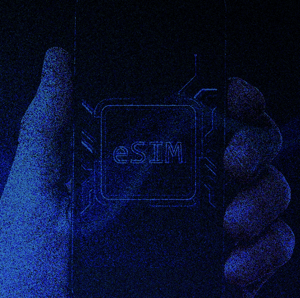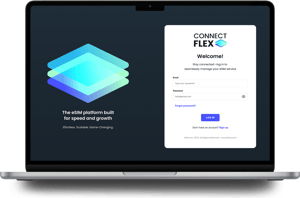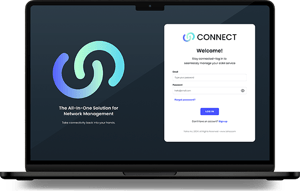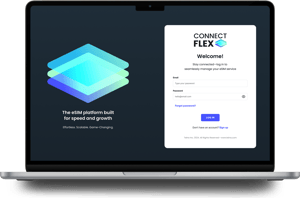How to Sell eSIMs for Travelling: A Comprehensive Guide
Find out how to sell eSIMs for travelling with our guide. Whether you’re an MVNO, fintech company or travel business, this guide covers everything from opportunity to implementation.
Table of Contents









The Travel eSIM Opportunity
The timing for travel eSIMs couldn't be better
From new kid on the block to industry standard: the rise and rise of eSIM has been remarkable to witness. Major manufacturers including Apple, Samsung, and Google have aggressively accelerated eSIM adoption across their device lineups, fundamentally changing how people connect globally.
For travelers especially, this technological shift eliminates the hassle of physical SIM cards. It also protects them from high roaming charges. With international tourism experiencing a remarkable post-pandemic resurgence, the demand for instant, affordable connectivity has never been higher. Travel eSIMs directly address this critical market need.
Industry growth projections are compelling.
*According to recent Kaleido Intelligence research, the travel eSIM market is set to reach an impressive $10 billion in retail spending by 2028. This explosive growth represents a significant revenue opportunity for businesses ready to capitalize on the digital connectivity revolution. The question isn't whether to enter the travel eSIM market—it's how quickly you can launch your offering.
Who Can Profit From
Selling eSIMs for Travelling?

• Recapture revenue lost to "silent roamers" who turn off data abroad
• Create new revenue streams from international travelers
• Differentiate from competitors with travel-focused offerings
• Increase customer lifetime value with international solutions
• Create additional revenue streams while enhancing customer experience
• Keep customers engaged in your app or ecosystem while traveling
• Add value to premium account offerings
• Differentiate from competitors with unique travel benefits
• Enhance ecosystem stickiness by keeping users on app
• Add high-margin travel eSIM as a new revenue stream
• Simplify expense management for corporate travelers
• Enhance duty of care capabilities with always-connected employees

Understanding Travel eSIMs:
How They Work & Why They Matter

Traditional SIM cards, those small plastic chips travelers needed to physically swap when changing networks, are being rapidly replaced by eSIM technology. An eSIM (embedded SIM) is a digital SIM card built directly into your device’s hardware.
Unlike traditional physical SIM cards, eSIMs are programmable. They allow users to activate cellular plans digitally without needing to insert or swap physical cards.
Travel eSIMs transform the traveler experience through a friction-free process:
- Pre-trip purchase: Travelers buy an eSIM plan for their destination before departure
- Digital delivery: The eSIM profile is delivered via QR code or in-app activation
- Simple activation: Upon arrival, travelers activate their plan with a few taps
- Instant connectivity: Connection to local networks happens immediately
- Dual functionality: The primary phone number remains active on their physical SIM
This process eliminates virtually all traditional travel connectivity friction points: no more hunting for SIM vendors at the airport, no language barriers during purchase, and no more bill shock from high roaming charges once they’ve come home.
For businesses entering this market, the advantages extend far beyond simply selling connectivity:
- Digital-first operations: No physical inventory, distribution logistics, or retail space required
- Data-driven insights: Gain valuable analytics on customer travel patterns and usage behaviors
- Enhanced customer experience: Solve a genuine pain point that affects nearly all travelers
- Cross-selling opportunities: Connectivity serves as a gateway to offer additional travel services
- Recurring revenue potential: Create opportunities for ongoing customer relationships
Choosing the Right eSIM Partner: Critical Success Factors

One of the most strategic decisions when entering the travel eSIM market is choosing between building direct carrier relationships or leveraging existing platforms. Each approach offers distinct advantages:
✔️ Direct Operator Partnerships :
- Establish relationships directly with mobile network operators in different countries
- Negotiate wholesale rates and terms directly
- Require more resources and time to establish multiple partnerships
- Ideal for regional or highly tailored eSIM offerings
- Typically offer better margins but higher entry barriers
✔️ Reseller Platforms :
- Work with established eSIM providers who already have global carrier agreements
- Quicker to market with less technical complexity
- Lower entry barriers and reduced up-front investment
- Access to established platforms, with built-in APIs, support systems, and technical infrastructure
- Quickly enable eSIM provisioning, user management, and Network-as-a-Service (NaaS) capabilities
What to Consider When Choosing a Global eSIM Partner :
Your eSIM partner selection will fundamentally impact your service quality, customer experience, and profitability.
Evaluate potential partners against these critical criteria:
- Geographical reach across popular travel destinations
- Network reliability and performance in key markets
- Access to multiple carriers in each country for redundancy
- Support for different network technologies (4G/5G)
- Easily add or update networks as travel needs change or better rates become available
- Competitive wholesale rates that allow for healthy retail margins
- Flexible pricing models to accommodate different business strategies
- Volume discounts for scaling your business
- Promotional pricing opportunities for marketing campaigns
- Robust API documentation and technical support
- Seamless integration with existing systems (booking platforms, apps)
- Automated provisioning and activation processes
- Real-time usage monitoring and reporting capabilities
- White-label options that can be fully customized with your branding
- Ability to differentiate your offering in the market
- Partner's standing in the industry and reliability history
- User-friendly interface for travelers to enable quick and easy eSIM purchases
- 24/7 technical support for end-users
- Clear escalation paths for resolving connectivity issues
- Self-service troubleshooting resources
- Multiple language support for international travelers
- Adherence to GSMA technical specifications
- Awareness of and compliance with local telecom laws
- Appropriate verification processes for different markets
- Compliance with GDPR and other privacy regulations
When assessing potential eSIM partners, use a weighted scoring system that prioritizes factors most important to your specific business model. A well-structured evaluation matrix will help quantify the comparison and make the selection process more objective.

Launching Your Travel eSIM Business: A Step-By-Step Guide
Step 1: Research & Planning
Begin with a thorough market analysis to position your offering effectively:
- Identify your target market segments
- Evaluate competitor offerings and pricing strategies
- Select your business model based on resources and capabilities
- Determine key travel destinations and required coverage
Deliverable: Comprehensive business plan with clear objectives, timeline, and success metrics.
Telna Advantage: With coverage in over 200 countries and territories, Telna offers unmatched global connectivity through established carrier relationships, eliminating the complexity of building your own network agreements.
Step 2: Choose the right technology partner
Whether you’re an MNO or a travel app, finding the right partner is key to your launch success. Your critical evaluation criteria should include:
- Global network footprint with competitive wholesale rates
- Flexible API integration options
- Scalable platform with proven performance
- Compliance with GSMA standards
- Comprehensive security protocols
Deliverable: Signed partnership agreement with clearly defined terms, technical specifications, and implementation timeline.
Want more? We’ve created a guide to finding your right global connectivity partner.
Step 3: Technical implementation
Complete account setup with your chosen provider, making sure you address the following:
- Create customer-facing interfaces
- Design user-friendly activation and onboarding processes
- Integrate backend systems with existing billing platforms
- Conduct end-to-end testing of customer journeys
Telna Advantage: With Telna, easily set up your online store and start selling without stocking inventory.
Deliverable: Fully functional eSIM platform integrated with your existing systems and ready for customer use.
Choose between Connect for a fully customizable integration or Connect Flex for a turnkey white-label solution that can be implemented in days, not months.
Step 4: Go-to-market preparation
- Develop your product packaging and pricing
- Create branded marketing materials and messaging for all relevant channels
- Train sales and customer support teams, empowering them with the right resources and workflows
- Establish reporting and monitoring processes
- Develop billing and revenue management procedures
Deliverable: Complete marketing toolkit, trained teams, and launch plan with timelines.
Telna’s management tools allow you to ensure complete visibility over connectivity levels, usage, performance, and, crucially, everything related to billing.
Step 5: Launch & continuous optimization
Begin with a soft launch to a limited customer base or beta testers. This will give you invaluable feedback to optimize the customer experience and give your offer the best chance of success.
When you launch fully, you’ll need to:
- Activate all marketing, sales, and distribution channels
- Monitor system performance and customer adoption
- Optimize pricing and packaging based on performance
- Expand destination coverage based on demand
Depending on the results, you might want to increase marketing investment in successful channels, enhance your offers or develop additional features.
Deliverable: Launch report with performance metrics and optimization roadmap.
For businesses looking to accelerate their eSIM launch, Telna offers a ready-made solution with extensive global coverage, real-time activation, and flexible reseller options.
Learn more about Connect and Connect Flex.
Maximizing Revenue:
Pricing and Monetization Strategies

Developing an effective pricing strategy is critical for balancing customer appeal with profitable operations. Consider these proven approaches:
Business Models for Maximum Revenue Potential
Different revenue models suit different business types and customer segments:
Strategic Pricing Considerations
Effective pricing strategies balance multiple factors:
- Destination-specific pricing: Adjust rates based on wholesale costs in different regions
- Competitive positioning: Price relative to alternative options (local SIMs, international roaming)
- Psychological pricing tactics: Utilize price anchoring and tiered offerings (Good/Better/Best)
- Value demonstration: Emphasize cost savings compared to traditional roaming fees
- Promotional strategies: Implement introductory offers, seasonal promotions, and loyalty incentives
Innovative Bundle Types
- Data Bundles: Packages for different users (basic, premium), destination-specific offers, and group/family plans.
- Roaming Passes: Time-based (daily, weekly, monthly), regional for travelers visiting several destinations
- App-specific Passes: Social media packages, business application bundles, or streaming-optimized options.
- Value-Added Services: VPNs, premium support, bundled content subscriptions, and concierge services.
Future-Proofing your eSIM Business

Staying ahead in the travel eSIM market means keeping an eye on key trends shaping the industry. These include:
Build flexibility into your technical implementation to accommodate these emerging trends. Choose partners with clear innovation roadmaps and the ability to quickly adapt to changing market conditions.
Conclusion: Start Selling Travel eSIMs Today

The window for establishing your position in the travel eSIM market is narrowing. Now is the time to act and secure your competitive advantage.
Why Telna is Your Ideal Partner
Telna offers a comprehensive solution for businesses looking to enter the travel eSIM market:
- Unmatched global coverage: Connectivity in 200+ countries and territories with reliable service even in challenging markets
- Flexible integration options: From turnkey white-label solutions to comprehensive API access
- Competitive wholesale rates: Maximize your margins while offering attractive customer pricing
- Dedicated support: Expert guidance from implementation through ongoing operations
Taking the Next Step
Frequently Asked Questions

While eSIM technology is becoming increasingly common, not all devices support it yet. Most newer flagship phones from Apple, Samsung, Google, and other major manufacturers include eSIM functionality. Users should check their device specifications before purchasing.
Yes! One of the major advantages of eSIM technology is the ability to maintain your primary phone number on your physical SIM while using the eSIM for data connectivity abroad. This ensures travelers stay reachable on their regular number while enjoying local data rates.
Activation is nearly instantaneous. Customers can purchase and activate their travel eSIM before departure or upon arrival at their destination. The entire process typically takes less than 2 minutes from purchase to connectivity.
The technical requirements vary based on your chosen implementation approach. With a white-label solution like Telna Connect Flex, minimal technical resources are needed so you could get started in a matter of hours. For bespoke integrations, you'll benefit from having developers but most implementations can be completed within 2-4 weeks.
Travel agencies can integrate eSIM offerings at multiple touchpoints in the customer journey: during booking confirmation, pre-trip communications, or through mobile apps. The most effective approach is presenting connectivity as a natural extension of the travel planning process, much as one would an insurance add-on for example.
Beyond basic sales metrics, successful eSIM programs monitor activation rates, data usage patterns, customer retention (repeat purchases for subsequent trips), support ticket volume, and net promoter scores. These indicators provide a comprehensive view of program performance and customer satisfaction.
Yes, Telna allow for seamless top-ups. Customers can purchase additional data through web portals or mobile apps without needing to acquire a new eSIM profile. These top-ups activate immediately, ensuring uninterrupted connectivity.
Travel eSIMs typically offer significantly better value than traditional roaming plans. Additionally, they provide local network speeds rather than the throttled connections often associated with roaming and offer greater transparency in pricing without unexpected charges.





